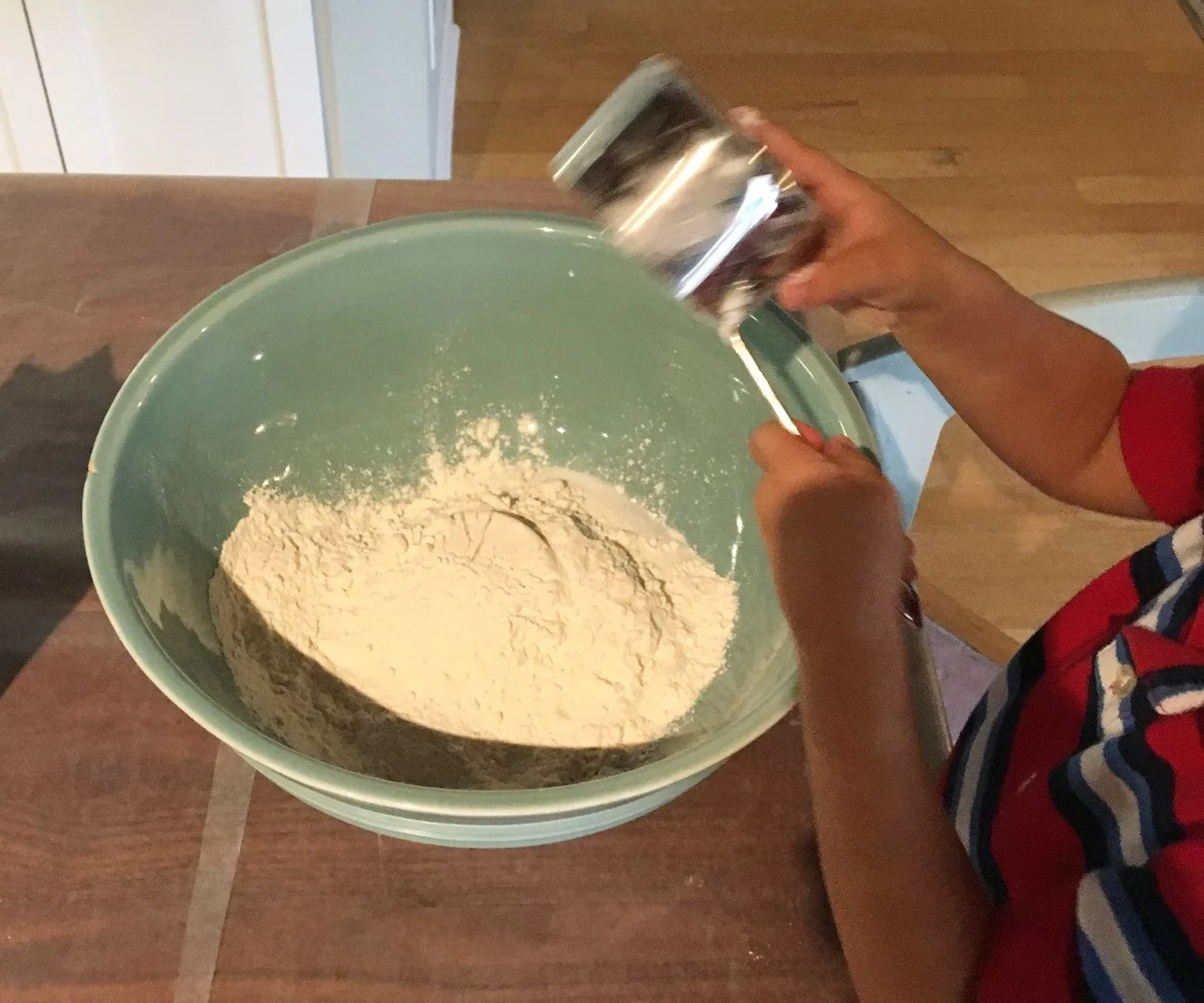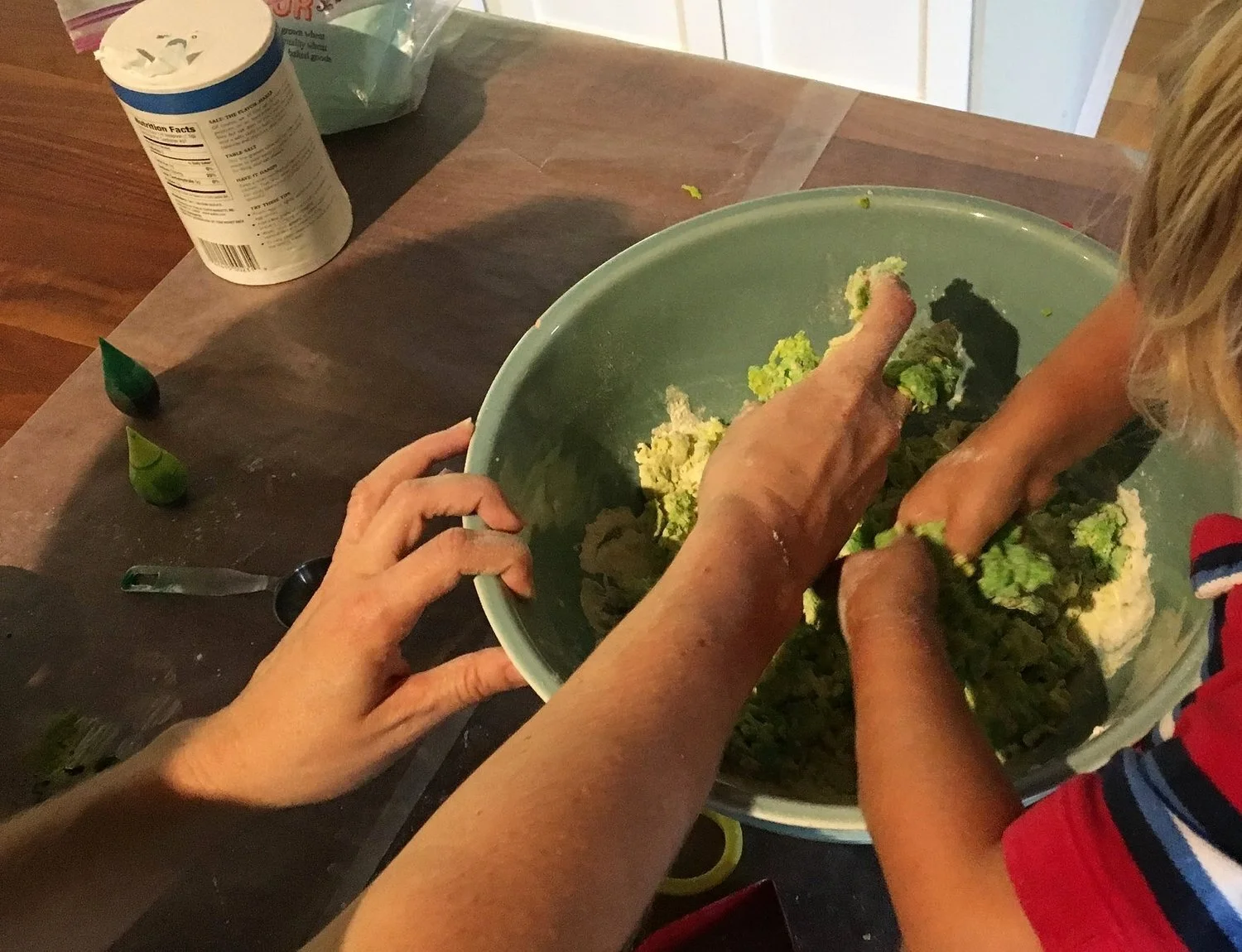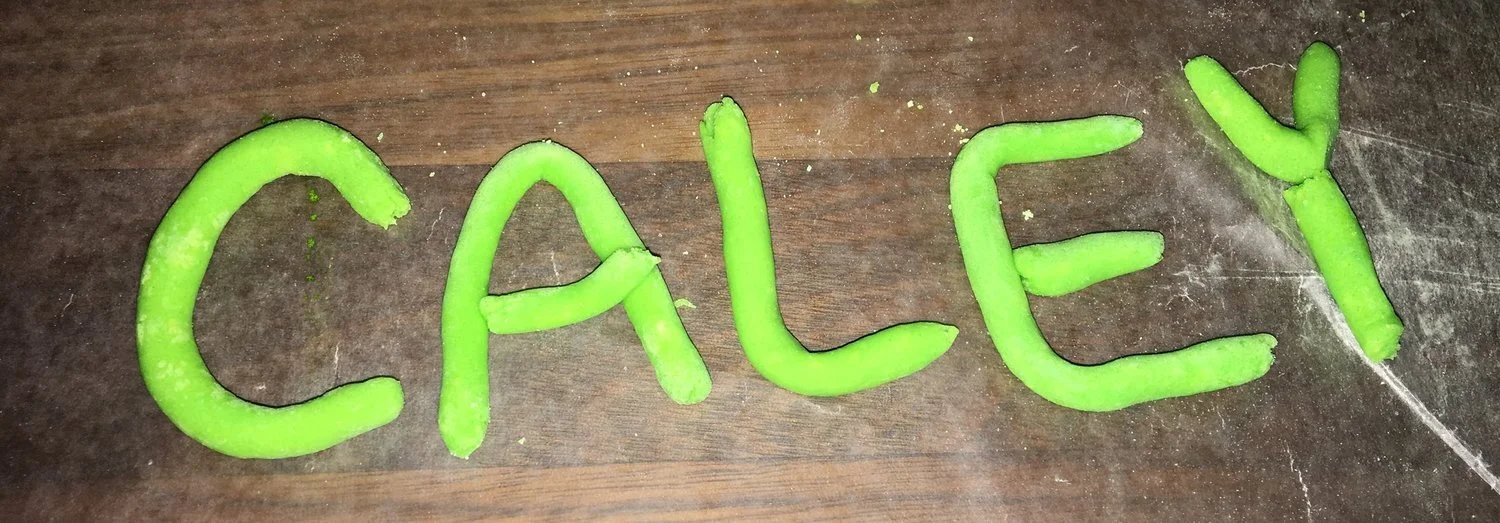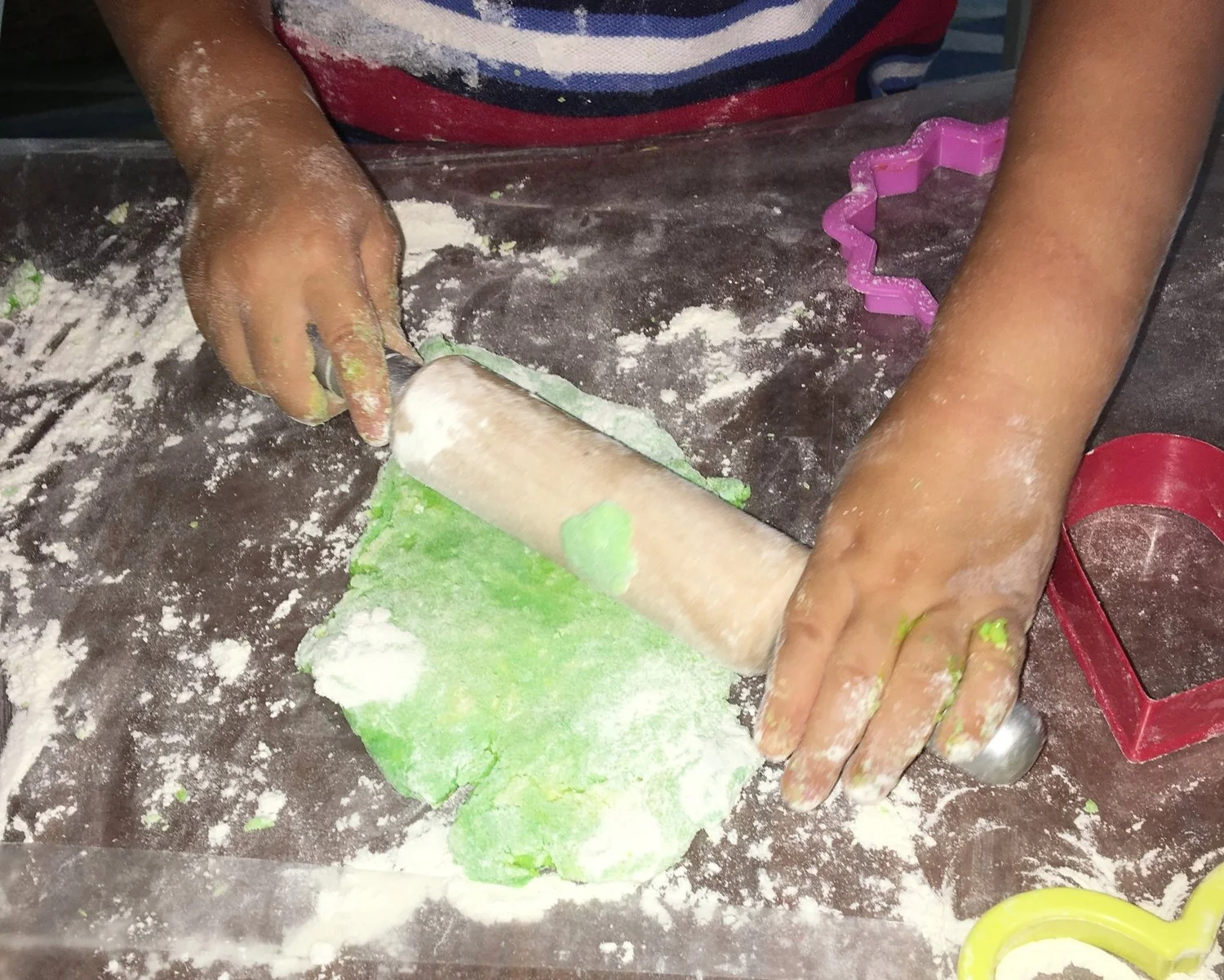Rainy Day Play Dough
Rainy days have this mama searching for anything and everything to take-up time and entertain both myself and the toddler. When I think of these activities, I look for multi-step projects to A. take up the most time and B. provide feelings of accomplishment and creation, while still allowing the activity to be open-ended. These two goals are the reason why we frequently make our own play dough instead of buying it.
An additional, general recommendation I will make is to invest in a Montessori kitchen stool. If your child is young enough so they are not a head over the kitchen counter, but old enough to have interest in what you do in the kitchen, these can be great investments. They allow you to involve your child in cooking, cleaning, crafting, etc at your level instead of you getting down on their level. After all, who really likes sitting in those tiny chairs at the miniature tables? They make meal prep so much easier because your child can feel involved in the process and can easily access your attention without being underfoot and clinging to your leg. Yet another #momwin!
While the stool is a great every day use, we’ll shift our focus back to the rainy day activity. My son stood on the stool as I collected our supplies. For older children, you can give them a list (verbal, written word, or picture) and task them with collecting the supplies. For younger kids you can demonstrate the process of gathering the supplies by using “think a-louds” or explaining what you are doing while you are doing it.
Materials:
1 Cup Salt
2 Cups Flour (Plus extra to sprinkle on the counter)
3/4 Cup Water
Big Mixing Bowl
Measuring Cup
Food Coloring
Whatever dough toys you want to provide: cookie cutters, rolling pins, plastic knives, scissors.
**You can even gather things around the house to make “prints” like coins, shells, costume jewelry, other kitchen utensils, etc.
Steps:
Measure 1 cup of salt and dump into mixing bowl.
Measure 2 cups of flour and dump into the mixing bowl.
Measure 3/4 cup of water.
Add food coloring to the water (the darker the water, the more vibrant your dough will be).
Add the water to the salt/flour mixture, a little at a time. You don’t want the dough to be too wet because then it will be sticky.
Once you find the right consistency of dough (remembering you can always add a little more or a little less water to the recipe), sprinkle some of the extra flour on the counter/table.
Knead the dough until it’s workable.
Embedded Learning Opportunities
Alphabetic Awareness: Depending on the age of your child, you can roll out “snakes” and then shape the letters to spell words, make the alphabet, spell their name, etc. For younger children (3 and under) parents can form the letters, label the letters, or ask children “What letter is this?” For older children, you can write the letter on a piece of paper and ask the child to roll out a “snake” and outline the letter. If that becomes too easy, challenge them to make their name out of play dough without any support. You can take it one step further and practice site words. Combining a sensory activity with a cognitive activity makes the material that much more memorable.
Scientific Method: While making the dough your chid is participating in several mathematical and scientific processes including measuring, combining substances to make a “mixture” and/or “solution”. Additionally, by following the recipe, they practice following a procedure to achieve a desired result.
Comparing Physical Characteristics of Materials: The dough changes physical property as you mix water into the flour/salt mixture. It changes from a dry, powdery mixture to a sticky, gooey, glop with elastic properties.
Fine Motor Skills: Scooping, mixing, kneading, dumping are all skills that require your child to use the small finger, hand, and wrist muscles. After the dough is made most of the activity will be fine motor including rolling out, cutting, stamping, pulling, pinching, squeezing, etc. If your child shows interest in scissors but has not yet developed the coordination and/or strength to operate scissors, using plastic children’s scissors with the dough is a great way to practice and refine the skill.
Making the play dough does make a mess so be prepared for clean-up. You could incorporate that into the activity plan and give your child a wet washcloth to see if they can make the flour magically “disappear” from the table top. Happy kneading!




